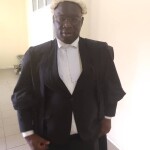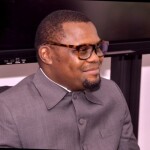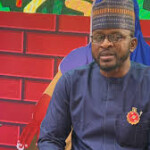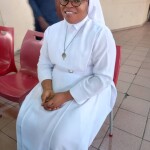By: L. A. Salami, Esq.
Legal Practitioner, Special Educationist, and Disability Inclusion Advocate
ABSTRACT
Inclusive education is a human rights-based approach that seeks to eliminate discrimination and ensure that all learners, regardless of disability, learn together within mainstream educational environments with appropriate support systems. In Nigeria, however, what is termed “inclusive education” is often a misrepresentation of the concept — characterized by segregation within integration, poor accessibility, inadequate human and material resources, and non-responsive curricula. What it truly means to practice inclusive education for learners with disabilities from the elementary to tertiary levels is concisely examined here, highlighting the peculiar needs of learners with visual impairment, albinism, deafness, intellectual and developmental disabilities, physical disabilities, and dwarfism. It further discusses environmental accessibility, human and material resources, curriculum adaptation, and legal frameworks required to realize genuine inclusion.
INTRODUCTION
Inclusive education represents a transformative approach in the education system — one that demands the reformation of school structures, teaching practices and societal attitudes to accommodate every learner. In Nigeria, while various policies and international commitments such as the UN Convention on the Rights of Persons with Disabilities (CRPD, 2006) and the Sustainable Development Goals (SDG 4) affirm the right to inclusive and equitable quality education, the reality remains far from the ideal.
Across many states, “inclusive education” is reduced to the practice of merely placing learners with disabilities on the premises of regular schools without corresponding instructional adaptation, accessibility provisions, or specialized support. This form of token inclusion amounts to exclusion by another name — a mockery of the true spirit of inclusion and a denial of access to quality education.
CONCEPTUAL FRAMEWORK OF INCLUSIVE EDUCATION
Definition and Principles
Inclusive education entails the process of ensuring that schools, classrooms and educational systems are restructured to accommodate and respond to the diverse learning needs of all learners, especially those with disabilities. According to UNESCO (2009), inclusion is not merely about physical placement but full participation, meaningful learning, and achievement.
Key principles include:
- Equal access to education in mainstream environments
- Removal of physical, attitudinal, and systemic barriers
- Adaptation of curriculum, pedagogy, and assessment methods
- Provision of individualized support and reasonable accommodations
- Respect for diversity as an enriching factor, not a limitation.
Legal and Policy Foundations
The right to inclusive education in Nigeria is anchored in:
- States disability laws
- Discrimination Against Persons with Disabilities (Prohibition) Act, 2018
- Universal Basic Education Act (2004)
- National Policy on Inclusive Education 2023 (revised)
- UN CRPD (Article 24)
- Sustainable Development Goal 4 — “Ensure inclusive and equitable quality education and promote lifelong learning opportunities for all.”
The Misconception of Inclusive Education in Nigeria
In many Nigerian states, the so-called “inclusive schools” are often hybrid institutions where all categories of learners with disabilities are grouped together and taught separately by one or two “special teachers” within the premises of a mainstream school. This approach contradicts the essence of inclusion by:
- Promoting segregation under the guise of inclusion
- Ignoring individual learning needs and diversity of disabilities
- Denying learners the opportunity for social integration and academic parity
- Overburdening teachers who lack the skills or resources to differentiate instruction.
Furthermore, many regular schools admit learners with disabilities without providing assistive technology, accessible environments, or adapted curricula — effectively leaving them to “fend for themselves” academically.
IMPLEMENTING TRUE INCLUSIVE EDUCATION: FROM ELEMENTARY TO TERTIARY LEVEL
1. Early Childhood and Elementary Education
At this foundational stage, inclusion is most critical because early interventions shape lifelong outcomes.
1.1 Key requirements:
- Early identification and assessment of disabilities
- Inclusive classrooms with small learner–teacher ratios
- Special education teachers integrated into regular classrooms
- Use of play-based, multisensory learning approaches
- Accessible learning materials (e.g. large-print, tactile, or pictorial resources)
- Sensitization of parents and peers to reduce stigma.
1.2 Peculiar needs:
- Learners with visual impairment: Require tactile and auditory learning tools, Braille materials and orientation and mobility training
- Learners with albinism: Need low-vision aids, non-glare classrooms and protective materials against UV exposure
- Learners with deafness: Require sign language interpreters, captioned materials and visual instructional aids
- Learners with physical disabilities: Need accessible furniture, ramps and assistive mobility devices
- Learners with intellectual disabilities: Require simplified tasks, individualized learning plans, and repetitive, concrete instruction
- Learners with dwarfism: Require ergonomic adjustments and seating adapted to height.
2. Junior and Senior Secondary Education
The adolescent years are crucial for cognitive development and career shaping.
2.1 Inclusive strategies:
- Universal Design for Learning (UDL): Designing lessons to accommodate all learners from the start
- Differentiated instruction: Allowing multiple modes of learning and assessment
- Peer tutoring and co-operative learning
- Accessible science laboratories and ICT tools
- Vocational and technical skill inclusion for learners with developmental disabilities
- Guidance and counseling support focused on self-esteem and life planning.
2.2 Required human resources:
- Special educators in every school cluster
- Sign language interpreters and note-takers
- Braille transcribers and mobility instructors
- School nurses and therapists (speech, occupational, physical).
3. Tertiary Education
In higher institutions, inclusion must go beyond physical access to encompass academic equity and institutional policy reform.
3.1 Institutional requirements:
- Disability support centers or units in all universities and polytechnics
- Accessible lecture halls, libraries, hostels and laboratories
- Provision of assistive technology: screen readers, hearing loops, speech-to-text software, etc
- Faculty training in inclusive pedagogy and accessibility awareness
- Reasonable accommodation policies: extra time in exams, accessible materials and flexible teaching methods.
- Scholarship and mentoring programs for students with disabilities.
3.2 Specific adaptations:
- Visually impaired students should receive lecture materials in digital or Braille formats
- Deaf students require interpreters and captioned videos
- Students with mobility impairments require elevators and priority seating
- Those with intellectual or psychosocial disabilities need supportive counseling and simplified evaluation mechanisms.
4. Environment Accessibility
The physical environment of learning must be designed under the principle of Universal Design — usable by all, without the need for adaptation.
4.1 Key Features:
- Ramps and elevators in multi-storey buildings
- Wide doors and non-slippery floors
- Accessible toilets and furniture
- Adequate lighting and acoustic control
- Clear tactile and visual signage
- Designated parking and emergency evacuation plans for persons with disabilities.
5. Human and Material Resources
No inclusive education system can succeed without qualified personnel and resources.
5.1 Human Resources:
- Teachers trained in inclusive pedagogy and special needs education
- Sign language interpreters, Braillists, resource teachers
- School psychologists, counselors, and therapists
- ICT specialists in assistive technology
- Inclusive education officers for monitoring compliance.
5.2 Material Resources:
- Braille display machines, audio books, magnifiers, and talking calculators
- Adaptive computer software (e.g., JAWS, NVDA)
- Hearing aids and FM systems
- Wheelchairs, adjustable desks, and ergonomic furniture
- Teaching aids with tactile and visual elements.
6. Curriculum Adaptation and Assessment
The curriculum must be flexible, functional, and responsive to diverse learning needs.
6.1 Adaptation approaches:
- Simplified content for learners with intellectual disabilities
- Audio-visual methods for deaf and visually impaired learners
- Modified assessment — oral, practical, or project-based alternatives
- Skill-based learning for employability and independent living
- Continuous assessment instead of purely terminal exams.
Teachers must employ Individualized Education Plans (IEPs) for learners who need personalized support.
7. Community and Parental Involvement
Inclusive education thrives where communities and parents are active participants.
- Parents should collaborate with teachers on IEPs
- Community sensitization campaigns to combat stigma
- School-based inclusion committees to track progress
- NGOs and DPOs to provide advocacy and capacity building.
8. Challenges Facing Inclusive Education in Nigeria
- Poor policy implementation and funding
- Shortage of trained personnel
- Inadequate infrastructure and assistive devices
- Negative societal attitudes and stigma
- Over-centralized curriculum
- Weak monitoring and enforcement mechanisms.
9. The Way Forward
- Integrate inclusive education into teacher training curricula nationwide
- Allocate not less than 10% of education budgets to inclusive education
- Enforce accessibility standards
- Strengthen data collection on learners with disabilities
- Develop inclusive education indices for national evaluation
- Foster collaboration among government, civil society, and private sector
- Implement the National Policy on Inclusive Education (2023 revised) with state-level frameworks.
10. Conclusion
True inclusive education is not about token placement but about transformation — in attitude, policy, pedagogy, and environment. It is about creating schools where every learner belongs, participates and achieves. Nigeria must move from rhetoric to reality by ensuring that inclusion is not a privilege granted, but a right guaranteed.
When inclusive education is properly implemented, learners with disabilities will not only gain access to classrooms but to dignity, empowerment, and equal opportunity for national development.
References
- UNESCO (2009). Policy Guidelines on Inclusion in Education.
- Discrimination Against Persons with Disabilities (Prohibition) Act 2018.
- United Nations (2006). Convention on the Rights of Persons with Disabilities (CRPD).
- Universal Basic Education Act (2004).
- Sustainable Development Goals (2015). Goal 4: Quality Education.







